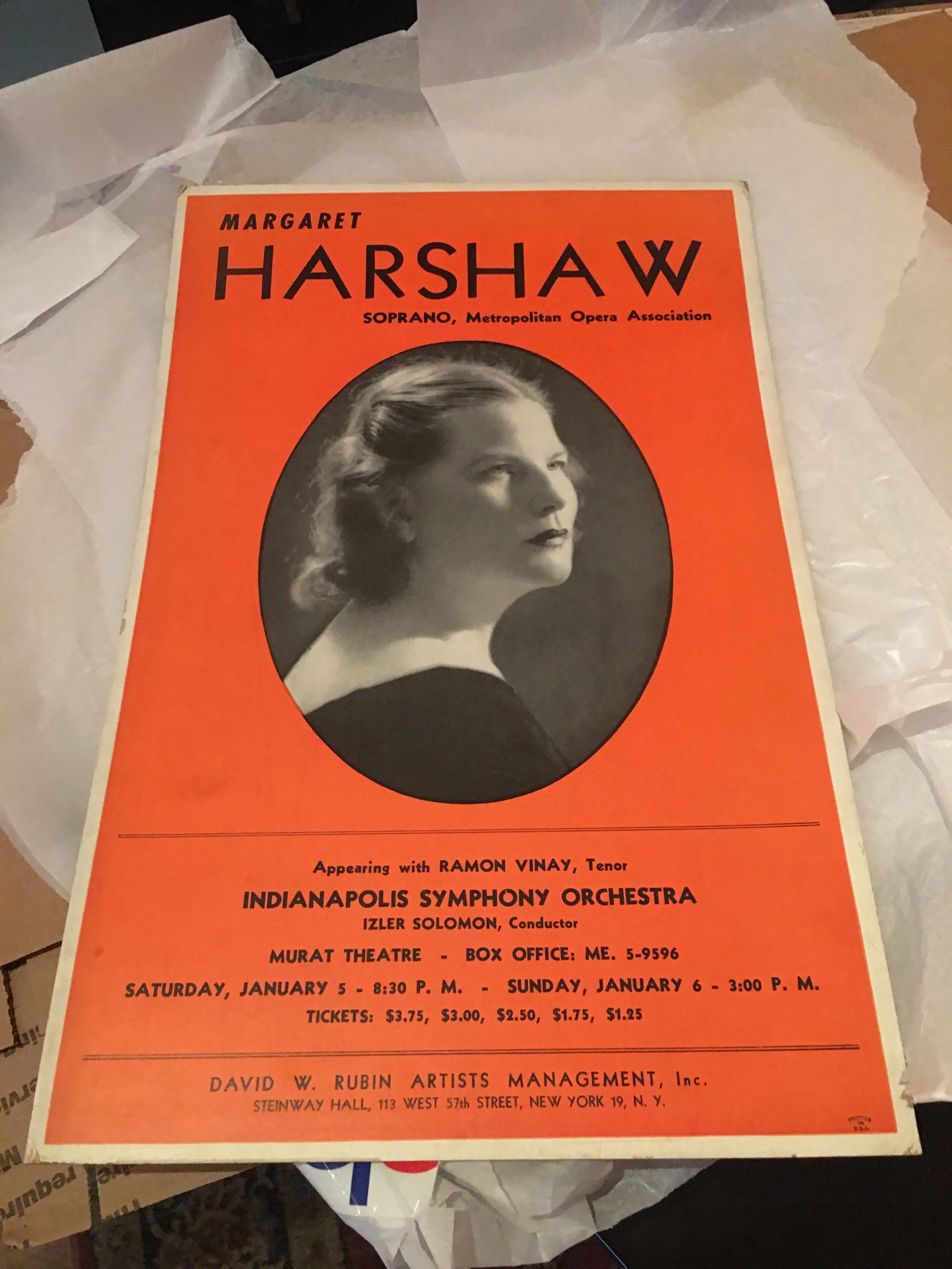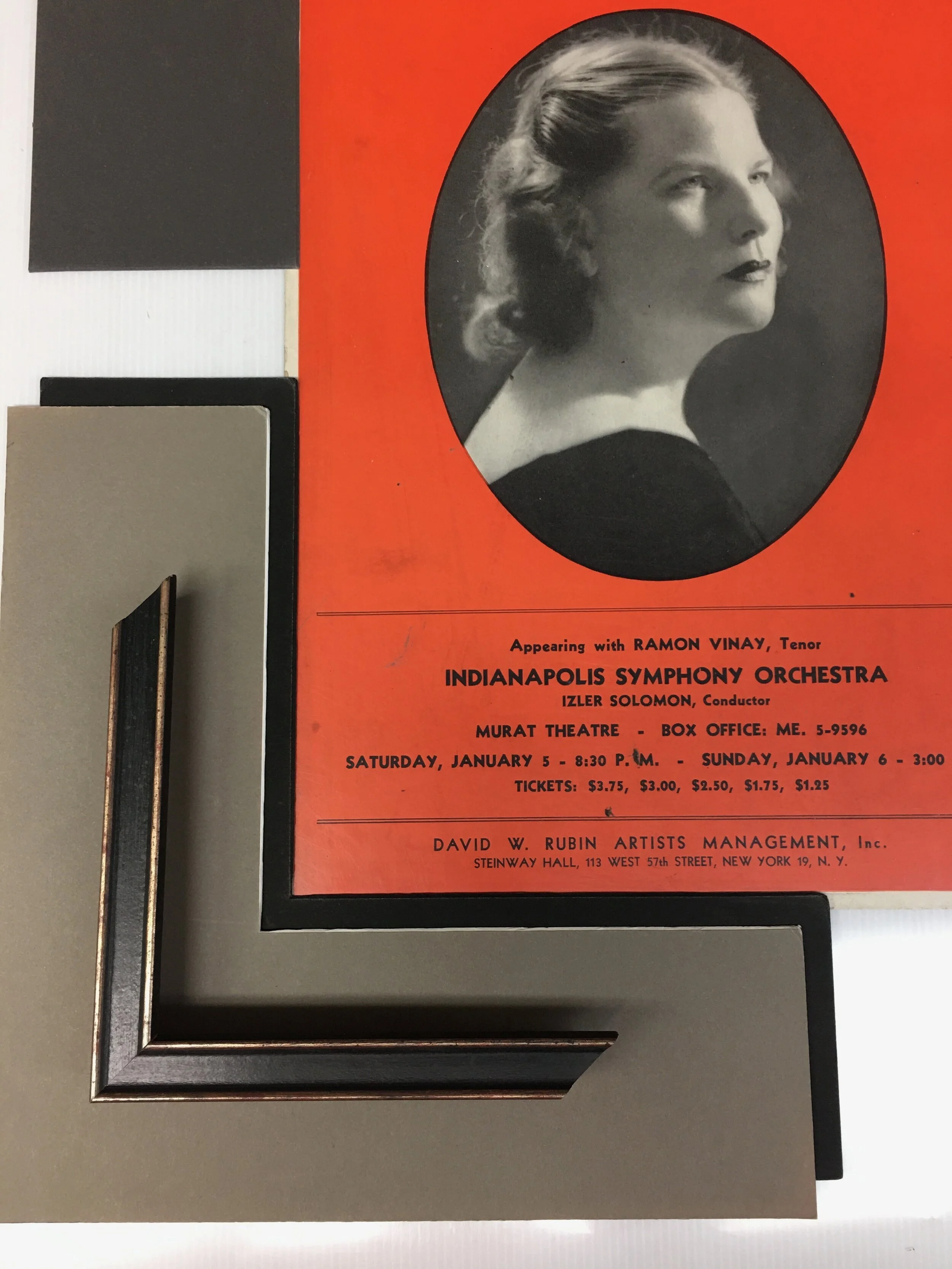Harshaw in 1950
I found her via a colleague who spied her on Ebay. No one made a bid. Was it the price or the hot tropical orange color?
Whatever the reason, I snapped her up, thinking: 1) I already have a copy of the original photograph, 2) can make the color work, 3) and must avoid using too much black—Halloween!
I’m a reluctant collector, my “collection” itself being of limited scope: including a handful of photographs of Garcia-Lineage singers, and a “thank you” letter written by the great man himself on his 100th birthday.
That’s been it until now.
Now Harshaw, in an orange—the color of change—theatre poster from 1950, will be looking down at me in the studio, keeping me on my toes.
That’s the plan anyway.
I remember Harshaw saying she heard the voice of Anna Schoen-René speaking to her when she practiced; and there is something of that going on in my head too, though it’s not always her voice, thoughts speaking in the middle of lessons, revealing themselves in the nitty-gritty of working out vocal problems.
The accumulated effect of a great deal of research?
If there is one talent I have, it is the ability to read a text and pull out what it useful and necessary while letting the rest go—the sound of acquired and condensed thought having its own voice. I don’t question it, but let it speak; and like writers of fiction experience it as a character that says and does what it will.
The brain is a curious thing. There are times when I find myself reaching for a book, searching through an article, or an old post—not knowing consciously why I am looking: yet—in yielding to the urge—find myself hearing what I need to know or do.
This is how change and forward movement happens. An obstacle must be overcome, beauty created, and in the process, principles reveal themselves.
Speaking of change: 1950 was the year Harshaw left dramatic mezzo-soprano roles for dramatic soprano ones, though she kept Ortrud in Lohengrin, oft mentioned as her most electrifying role, and the one she ended her Metropolitan opera career with in 1964.
I was 6 in 1964—the same year I met my daimon in the form of Julie Andrews in the movie Mary Poppins, and would have to wait another 21 years to meet Margaret Harshaw.


